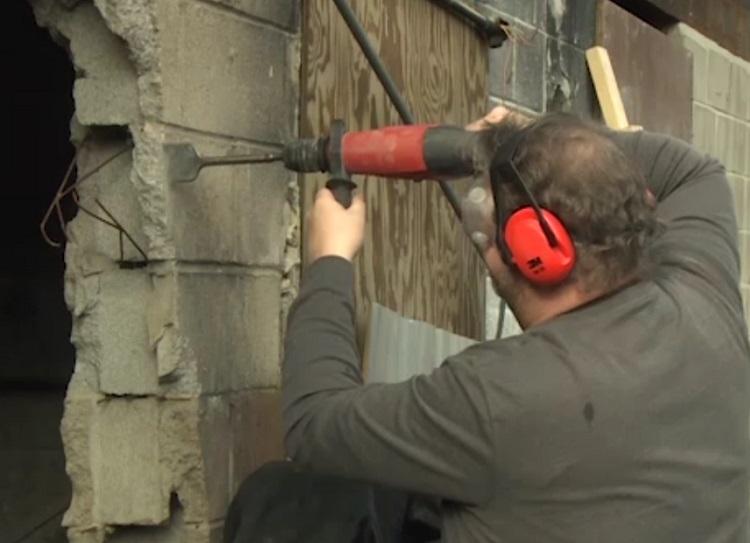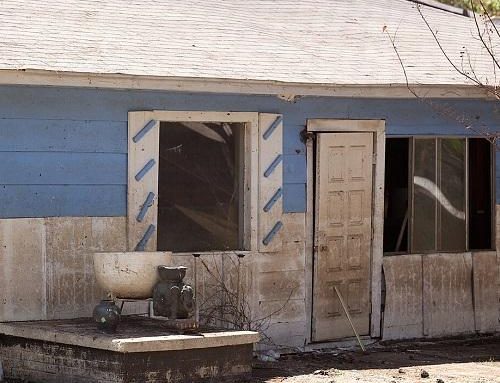Invisible particles swirl through the air as you grind, saw, or blast materials at work. You may not notice them, but they can be deadly. These tiny specks are crystalline silica dust, a common but dangerous substance found in many industrial and construction settings. Breathing it in can lead to silicosis, lung cancer, and other respiratory diseases. That’s why it is crucial to understand silica hazards and how to stay safe on the job.
What is Crystalline Silica?
Crystalline silica is a mineral compound composed of silicon and oxygen atoms arranged in a crystalline structure. It occurs naturally in the earth’s crust and is a component of sand, granite, and many other rocks and minerals. Quartz is the most common form. When rocks and minerals are broken or crushed, dust containing crystalline silica is released.
The dust particles are very small, generally less than 10 micrometers in diameter. For comparison, a human hair is 50-100 micrometers wide. This tiny size allows the dust to stay airborne for long periods and to penetrate deep into lung tissue when inhaled. The small particles trigger inflammation and scarring in the lungs, leading to impaired breathing and respiratory diseases.
High-Risk Occupations and Tasks
Any task that disturbs silica-containing materials can release hazardous dust. OSHA estimates over 100,000 U.S. workers in general industry and 2 million construction workers are exposed to crystalline silica each year.
The highest exposures occur during abrasive blasting with sand to remove paint and rust from structures. Abrasive blasting propels high velocities of dust outward, exposing workers without proper safety controls.
Other tasks producing elevated silica dust levels include:
- Cutting, grinding, crushing, or drilling silica-containing materials such as concrete, masonry, tile, and rock.
- Construction activities like excavation, earthmoving, road work, and demolition of structures containing concrete or masonry.
- Mining, quarrying, and tunneling operations.
- Manufacturing of glass, concrete, stone, clay, and ceramic products.
- Sandblasting jeans or car parts.
- Using silica flour as an abrasive cleaning agent.
- Foundry work and sand molding.
- Refractory brick work, such as lining furnaces.
- Railroad track maintenance.
Any task that disturbs silica-containing material may expose workers to the hazards of silica dust. Employers must assess exposures and implement controls to protect workers.
Health Effects of Silica Dust
Breathing respirable crystalline silica dust, even in small amounts over time, can lead to silicosis. This incurable lung disease causes scarring and reduced lung function, resulting in shortness of breath, fatigue, chest pain, and susceptibility to lung infections. In severe cases it can lead to disability or death.
Silicosis usually develops after 15-20 years of moderate to low exposures, but can appear in just months with very high exposures. Silica dust also increases the risk of lung cancer, chronic obstructive pulmonary disease (COPD), and kidney disease.
Since silicosis has no cure, the best option is to prevent hazardous exposures. OSHA’s updated silica standards aim to better protect workers from these serious health risks.
OSHA’s New Silica Standards
In 2016, OSHA issued new respirable crystalline silica standards for general industry and construction. These rules reduced the permissible exposure limit (PEL) to 50 micrograms of silica per cubic meter of air, averaged over an 8-hour work shift. The previous PELs allowed much higher exposures.
The new limits reflect the best available science, allowing no more than 50 micrograms of silica dust per cubic meter of air. By following the standards, employers can better protect workers from silicosis, lung cancer, and other silica-related diseases.
Before work begins that may expose workers above the action level of 25 μg/m3, employers must:
- Assess worker exposures to silica dust.
- Implement controls to limit exposures under the PEL.
- Provide training on silica hazards.
- Offer medical exams to highly exposed workers.
- Follow other requirements outlined in a written exposure control plan.
For construction industry employers, OSHA also provides Table 1 outlining control measures for common tasks. By fully and properly implementing the specified engineering controls, work practices, and respiratory protection for each construction task, employers can comply with the PELs without measuring worker exposures.
Engineering and Work Practice Controls
The new standards emphasize controlling silica exposures through well-designed ventilation systems, equipment improvements, safer work practices, and other measures. Relying only on respirators is no longer considered adequate.
Example controls include:
- Using water sprays or misting systems to suppress dust.
- Improving ventilation and filtering exhaust air.
- Enclosing dust-generating processes.
- Using vacuum dust collection systems on tools.
- Substituting less hazardous materials when possible.
- Following good housekeeping to limit dust exposures.
Work practices are also important, such as:
- Never using compressed air or dry sweeping to clean up silica dust.
- Positioning yourself to avoid direct exposure to dust.
- Washing hands and face before eating, drinking, or smoking.
- Isolating and labeling restricted access areas with high dust levels.
By implementing multiple safeguards, exposures can be reduced to safe levels. But even with advanced controls, respirators may still be needed for some high-risk tasks.
Respiratory Protection
When engineering and work practice controls cannot maintain exposures under the PEL, employers must provide proper respiratory protection and ensure it is used. Appropriate respirators, such as N95 or half-mask types, must be selected based on silica concentrations in the workplace air.
Employers must have a comprehensive respiratory protection program, including:
- Proper selection of respirators based on exposure levels.
- Training on use and maintenance.
- Fit testing to ensure a good seal to the face.
- Evaluation of medical fitness to wear a respirator.
- Regular cleaning and inspection.
- Procedures for proper storage.
Even a high-efficiency respirator cannot fully protect workers if it doesn’t fit well. A good face seal is critical for safety. Beards or facial hair may prevent a tight seal.
Access to Information and Training
To further protect workers, OSHA’s standards require employers to:
- Review and update exposure control plans at least annually.
- Designate a competent person to oversee compliance in construction.
- Provide safety information and training for workers exposed to silica dust.
- Offer medical exams for highly exposed workers.
- Maintain records of exposure measurements, control plans, and medical findings.
Workers have a right to access exposure records, control plans, and safety training materials on request. Stay informed about the hazards and control measures relevant to your job. Be sure you understand how to work safely with silica.
Taking Action to Reduce Risk
Crystalline silica dust poses a serious health threat to exposed workers. But the hazard is preventable. The new OSHA standards provide guidelines to better protect workers from these risks. Companies can implement improved engineering controls, safe work practices, and proper respiratory protection when needed.
Workers should stay informed about silica in their work environment. Be aware of high exposure tasks. Follow safety procedures, utilize dust controls, wear recommended respirators, and speak up if conditions seem unsafe. Protect not only yourself but your coworkers as well. By working together with management, unions, and health and safety committees, workplace silica hazards can be significantly reduced.
The grave risks and pervasive exposure of crystalline silica in various industrial and construction activities cannot be ignored. As the article highlighted, stringent measures and education are vital to safeguarding the well-being of millions of workers. This realization leads us to a critical solution – equipping employees with the right knowledge and skills to handle silica safely. Here’s where our online training course plays a pivotal role.
In a world where over two million workers face the invisible threat of silica dust every day, the knowledge and skills to stay protected are paramount. That’s why we’ve crafted a comprehensive, user-friendly online course specifically designed to meet OSHA’s Silica Safety Standards.
Introducing the Full-Length Interactive Course on “Silica Safety in Industrial and Construction Environments”
Our full-length interactive course doesn’t just skim the surface; it dives deep into the crucial areas of silica safety, including:
- Understanding the hazards of respirable crystalline silica
- Comprehensive exposure control plans
- Best practices in control systems, safe work practices, and personal protective equipment (PPE)
- Vital information on medical surveillance and recordkeeping
And the best part? This vital training is available in both English and Spanish, making it accessible to a diverse workforce.
Don’t gamble with safety. Invest in the future of your workers and organization with our “Silica Safety in Industrial and Construction Environments” online course. Equip your team with the knowledge they need to tackle the hidden dangers of silica, foster a culture of safety, and ensure compliance with OSHA’s rigorous standards.
Remember, with silica, what you don’t know CAN hurt you. Protect your workers today.










